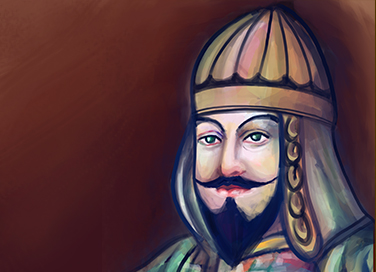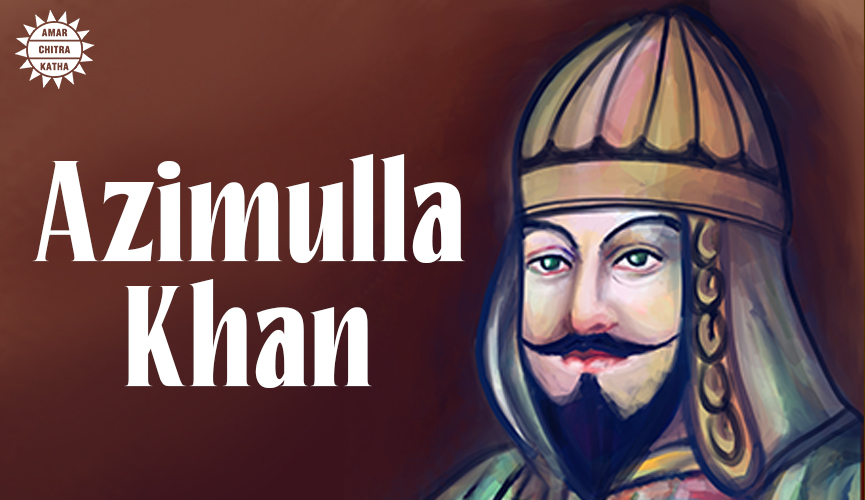Who was Krantidoot Azimullah Khan?
- October 22, 2021


Who was Krantidoot Azimullah Khan?
- October 22, 2021
By Dheer Sanghi
Azimullah Khan, also known as Krantidoot Azimullah Khan (Krantidoot meaning ‘Ambassador of Revolution’ in Hindi), lived a storied yet somewhat obscure life. Born on 17 September, 1830, Khan assisted in the Indian Rebellion of 1857. Being only a child during the famine of 1837-38, Azimullah Khan had to be rescued alongside his mother by British missionaries, going to their shelter in Kanpur. As he grew up, he learned both English and French, proving to be capable and clever.
After his education, he got a job as a secretary to British officers. This led to another job under Shrimant Nana Sahib Peshwa II, an aristocrat of the Maratha Empire, where Azimullah Khan not only worked as a secretary but an advisor as well. Nana Sahib, the adopted son of Peshwa Baji Rao II, had a disagreement with the British government regarding his late father’s pension; as although he inherited his father’s property and title, the government refused to give him the pensions that came with it. Hence, Nana Sahib chose Azimullah Khan to head a team that would travel to England and represent his case with the Board of Control.
To receive more such stories in your Inbox & WhatsApp, Please share your Email and Mobile number.

In England, Azimullah Khan met a variety of interesting people – Lady Duff-Gordon being one of them. She took Khan under her wing, as well as guided him to the right people in England due to her husband being a civil servant. Even with all of Khan’s efforts, the trip was in vain as the government refused to resume Nana Sahib’s pensions. Historians believe that this left Khan dissatisfied and antagonized at the system and British rule in general, resulting in his action in the first war of Independence in later years. His belief that the British weren’t invincible grew on his way back from London. Stopping at Constantinople and witnessing firsthand the losses the British army took against the Russians spurred his motivation to gain freedom for his land.
When back, Azimullah Khan was still Nana Sahib’s trusted advisor and convinced the Peshwa of the dangers of British rule. Additionally, he brought back a French printing press from his trip, and disseminated literature that went against British colonisation.
Although Khan sowed the seeds of rebellion, he became a marginal figure due to a lack of personal wealth, title, supporters, or skill in combat. Hence why his story isn’t told often.
Though not well known, Khan is credited with making a deal with Major-General Sir Hugh Wheeler, offering him a safe passage for his family and colleagues due to the ongoing Indian mutiny, all the while knowing Nana Sahib was recruiting people to besiege them. This was instrumental to the massacre which resulted in all escaping British males being killed. In total, of the 900 fleeing Britons, only seven survived, Many believe this attack was revenge for the atrocities committed by British soldiers in quelling the Indian rebellion occurring at the time.
Azimullah managed to escape the wrath of the British in their retribution for these massacres, as they set fire to whole villages. The Krantidoot’s final days are uncertain, with historians unsure of specifics on how he died. Some say he died of smallpox when trying to escape from British officers, others say it was due to a fever, and one book says he was murdered in Constantinople after fleeing there.
Regardless of how he died, Azimullah Khan has an important place in history and is aptly known as the Ambassador of Revolution.
To receive more such stories in your Inbox & WhatsApp, Please share your Email and Mobile number.

Comic of The Month
The Naval Journey of India Book I
This book is the first of a three-book series that takes a deep and detailed look at India's Naval History and a deep insight into the lives of our men and women in white. But any series on the Indian Navy has to start at the very beginning - exploring India's celebrated maritime history. Join our little hero, Bharat, and his grandfather, Commodore Sagar, as they sail into the deep blue waters of time. Book I of The Naval Journey of India takes a sweeping look at India's maritime endeavours, how the seas impacted us over millennia and how the oceans made us who we are.